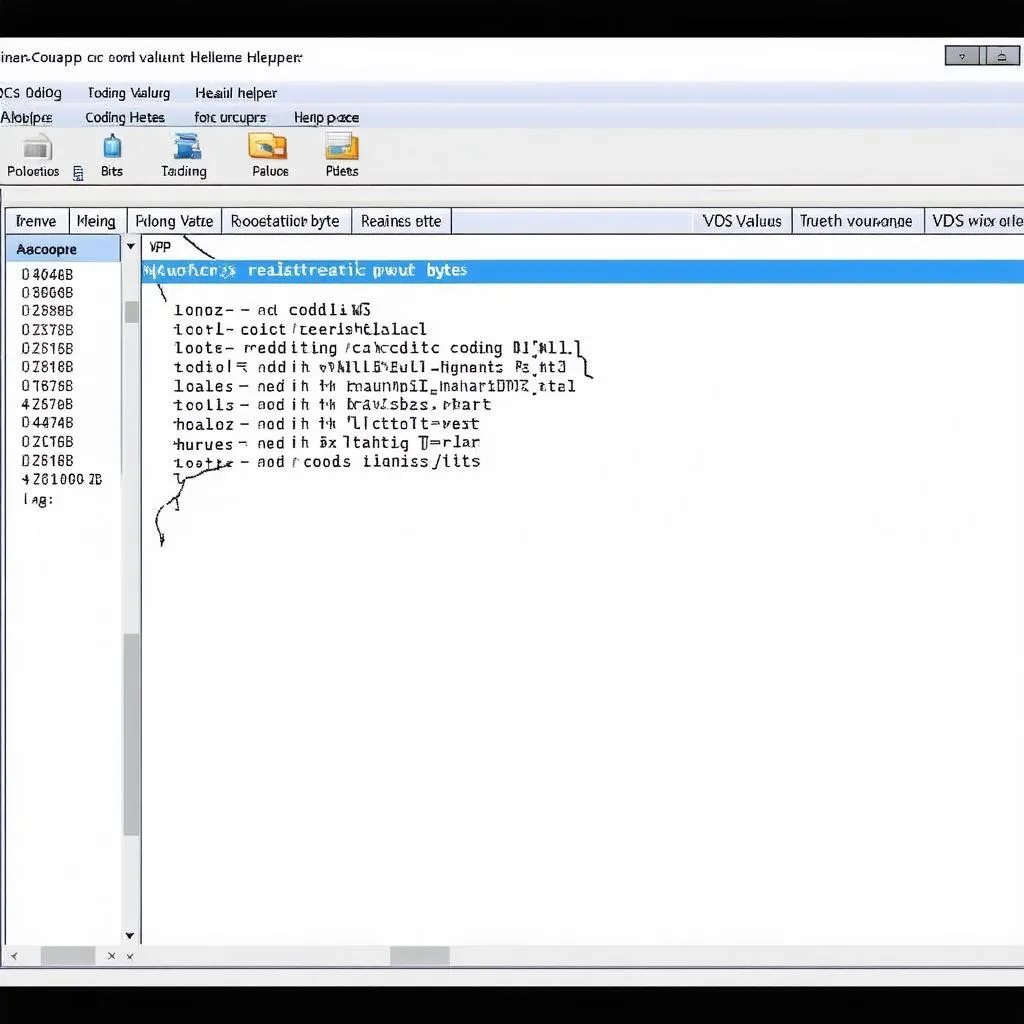If you’re driving a 1.8T engine and experiencing performance issues, the VCDS (VAG-COM Diagnostic System) misfire counter can be your best friend in identifying the culprit. This article provides a deep dive into understanding and utilizing this powerful tool for diagnosing misfires in your 1.8T engine.
What is the 1.8T VCDS Misfire Counter?
The 1.8T VCDS misfire counter is a diagnostic function within the VCDS software that records instances of engine misfires. Misfires occur when the air-fuel mixture in a cylinder fails to ignite properly, leading to a loss of power, rough idling, and potentially increased emissions.
This tool provides valuable data on:
- Frequency of misfires: How often misfires are occurring.
- Cylinder-specific misfires: Identifying which cylinder(s) are experiencing misfires.
- Conditions under which misfires occur: Understanding if misfires happen under specific conditions like acceleration, idling, or high RPMs.
Why is the VCDS Misfire Counter Important?
Misfires can be caused by a variety of factors, ranging from faulty spark plugs and ignition coils to issues with fuel injectors or even mechanical problems within the engine. The VCDS misfire counter helps pinpoint the source of the problem, preventing unnecessary guesswork and potentially costly repairs.
As John Miller, an experienced automotive engineer, states in his book “Modern Engine Diagnostics,” “Ignoring misfires can lead to catalytic converter damage and significantly impact engine lifespan.”
How to Use the VCDS Misfire Counter
Using the VCDS misfire counter is a relatively straightforward process:
- Connect your VCDS interface to your car’s OBD-II port and your computer.
- Turn the ignition on but don’t start the engine.
- Launch the VCDS software and select your vehicle model.
- Navigate to the engine module (usually labeled 01-Engine).
- Select “Measurement Blocks” or “Measuring Blocks.”
- Look for a block group that displays misfire counts for each cylinder. This may vary depending on your specific engine code.
- Observe the misfire counters while idling and driving under various conditions to identify patterns.
Interpreting the Results
- Consistent Misfires: A consistently high misfire count on a specific cylinder usually points to a persistent issue with that cylinder’s ignition system (spark plug, coil pack), fuel injector, or potentially a mechanical problem like a valve issue.
- Intermittent Misfires: These are trickier to diagnose and can be caused by factors like failing sensors (e.g., crankshaft position sensor), vacuum leaks, or wiring issues.
- Misfires under Specific Conditions: Misfires that only occur during acceleration might indicate a problem with fuel delivery or boost pressure, while misfires at idle could suggest a vacuum leak.
 1.8T Engine Misfire Causes
1.8T Engine Misfire Causes
Common 1.8T Misfire Causes and Solutions
While the misfire counter helps pinpoint the affected cylinder, identifying the root cause often requires further investigation. Here are common culprits in 1.8T engines:
- Ignition System: Worn spark plugs, faulty ignition coils, or failing coil pack harnesses are frequent offenders. Replacing these components is often the first step in addressing misfires.
- Fuel System: Clogged fuel injectors, a failing fuel pump, or a restricted fuel filter can disrupt fuel delivery and cause misfires. Cleaning or replacing these components might be necessary.
- Vacuum Leaks: Leaks in vacuum hoses or the intake manifold can disrupt the air-fuel mixture, leading to misfires. Inspecting and replacing any damaged hoses or sealing leaks is crucial.
FAQs
Q: Can a bad oxygen sensor cause a misfire?
While a faulty oxygen sensor can disrupt the air-fuel ratio and impact engine performance, it doesn’t directly cause misfires. However, a rich or lean fuel mixture due to a bad oxygen sensor can lead to conditions that eventually trigger misfires.
Q: My car is throwing a check engine light with a misfire code. Will clearing the code reset the misfire counter?
Yes, clearing the code will typically reset the misfire counter. However, if the underlying problem causing the misfire isn’t addressed, the counter will start accumulating misfires again.
Q: Can I drive my car with a misfire?
While you might be able to drive short distances with a misfire, it’s strongly discouraged. Continued driving with misfires can damage the catalytic converter, lead to further engine problems, and significantly impact fuel economy.
Need Further Assistance?
The 1.8T VCDS misfire counter is an invaluable tool for diagnosing engine problems, but interpreting the results and identifying the root cause often requires expertise. If you’re experiencing persistent misfires, it’s crucial to consult with a qualified mechanic or automotive specialist who can accurately diagnose the issue and recommend the appropriate repairs.
For professional-grade diagnostic tools and expert advice, consider reaching out to CARDIAGTECH. Their range of products and resources can further assist you in keeping your vehicle running smoothly.

